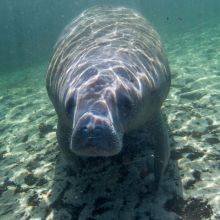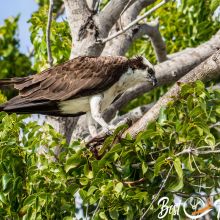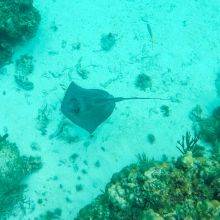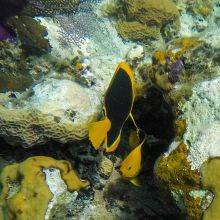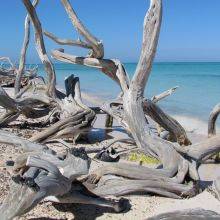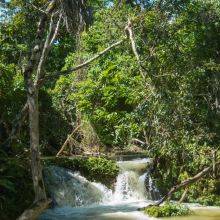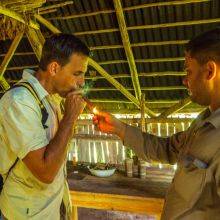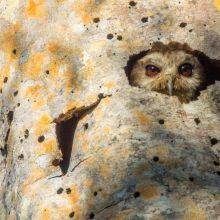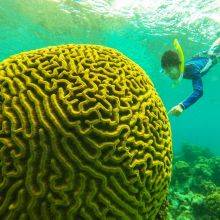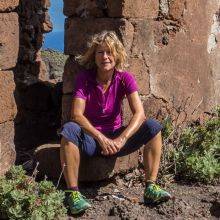When Is the Best Time
Honeymoon Island State Park is a birdwatchers paradise. We only spent one day on the peninsula and we were surprised that we spotted such a huge number of different bird species. The Bald Eagle; the national emblem of the United States nests here again since 2009 from October to May. Honeymoon Island is also a great spot for ospreys and great horned owls. You may spot many birds of prey on the Osprey Trail, especially in the dry season. You definitely don't get disappointed when visiting this peninsula just 30 miles/48 km west of Tampa.
Highlights by Seasons
Winter (December-February)
- Nesting season of the great horned owl and the osprey.
- December is the best time to spot the belted kingfisher.
- January is the nesting season of the roseate spoonbill.
- February the snowy plover starts nesting.
- Manatees can be seen close to the island in winter.
Spring (March-May)
- Migratory birds come to the island; peak in April.
- Great blue heron nesting season in March.
- Stingrays move to the shore in April.
- In May shorebirds start nesting.
Summer (June-August)
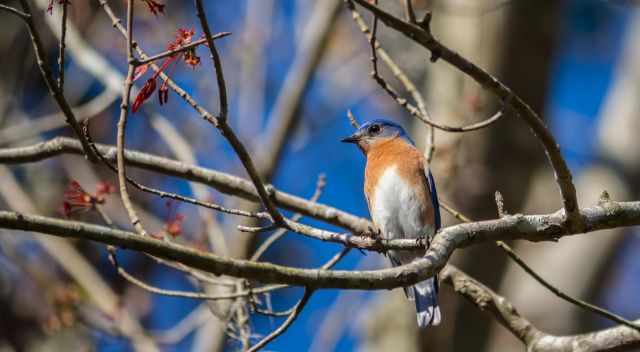
- Frigate birds come to the peninsula if storms are blowing on the Gulf of Mexico.
Autumn (September-November)
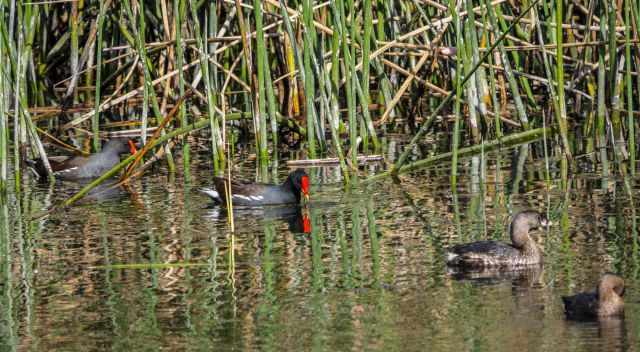
- Warblers, peregrine falcons, and other birds migrate to the island.
- Bald Eagle mating and nesting season roughly from October to May.
Turtle Nesting Season
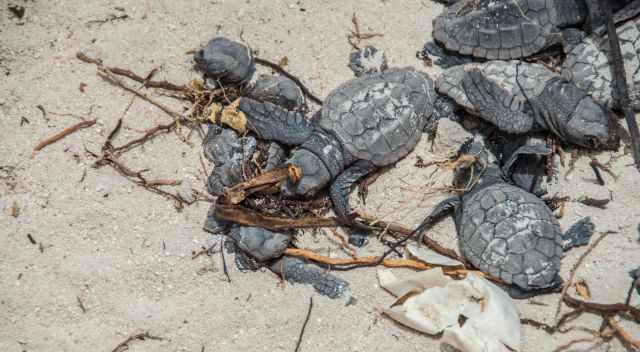
Different turtle species come during the night to lay their eggs between May to October. They lay their eggs on the same beach where they were born. They dig just with their flippers and cover the ping-pong seized eggs with the sand afterwards. The sex of the hatchlings is determined by the temperature; hotter sand above 82°F produces females and below males. They emerge roughly after 60 days. One of the turtle species that appear here are the loggerhead turtles among others from April to August.
The North Beach trail can be walked best at low tide. Tide Times Honeymoon Island
Weather Details Tampa
The Florida climate can be divided into two seasons; the wet and the drier season. It is a humid subtropical climate in Tampa. Temperatures below freezing are rare to experience.
- Dry Season (November-April)
The drier season starts in November and lasts until April. Temperatures in November and April reach almost 30°C/86°F. It is pleasant from December to March with temps ranging from 22-25°C/71-77°F. It is rare to experience temperatures below freezing, but we experienced a cold front in 2018. It was too cold to sleep in our tent. Occasionally showers occur also in the drier season. Fewer mosquitos and lower humidity in the colder season; both are definitely a pro.
- Wet Season (May-October)
The wet season usually starts in mid-May and last until October. June to September are the wettest months, experiencing 60% of the annual rainfall. Due to the hot temperatures above 30°C/86°F and the high amount of precipitation, the humidity is frequently unbearable. Thunderstorms occur in the afternoon. The hurricane season in the Caribbean also has an impact on the climate in Florida from June to November. There is a high risk that Florida gets hit by a hurricane, especially in September and October. Mosquitos are an issue during the wet season.
Daily from 8 a.m. to sunset. The exact time is shown at the entrance gate - sunrise and sunset times
Don’t come here in a rush. Enjoy this gorgeous park while birding, hiking, sunbathing or swimming. Bring plenty of water and a picnic. There isn’t any restaurant or cafe available in the Honeymoon Island State Park. We highly recommend staying nearby in the excellent and new Hampton Inn Dunedin. The location, the comfy bed, the friendly staff we couldn't wish for better. Don’t miss the Caladesi Island State Park.
Best Months to Visit
Location and Tips

Honeymoon Island was offered for newlyweds for two weeks free honeymoon by wealthy Clinton Washburn in 1939. This is where the name origins from. It was called Hog Island before a hurricane split it into two parts on the night of October 24, 1921. Nowadays, Honeymoon and Caladesi Island are popular for their pristine beaches and shells. These islands are barrier islands protecting the inland from severe waves.
Hig waves of 40 feet wash over them and they get dramatically changed. These waves are transporting tremendous quantities of sand and beach materials. Caladesi can be reached by ferry from Honeymoon Island or private boat only. Honeymoon is a 3 miles long peninsula covered with palm trees, cedar trees and, pine trees.
Osprey Trail (Google Maps location)
There are different trails inside the park. The main track is the Osprey trail, named after the many nesting pairs of ospreys along the path. It is almost guaranteed to spot them during the nesting season. The 2.2 mile/3.5 km circular trail leads through pine forest. Several short paths to the right and left bring you closer to a nest in the trees.
First, you reach a board with information about the great horned owl. Have a look at the top of the next tree on the right side of the board. The owl might sit in there. Continue on the path and soon you reach several osprey nests. We even spotted one with a freshly caught fish out of the sea. The reason that the osprey's nest here is the abundant fish around the island.
The last part of the trail is closed from October to May; That's the bald eagle's nesting and breeding season. There are two benches for resting and observing the bald eagles with your binocular or wait until one of them returns. The eagles get disturbed if visitors come to close the reason for the closure. You get to the Pelican Cove Trail from the Osprey Trail only. It’s a short hike less than one mile to the tidal flats.
They are inhabited by shore and migratory birds. There are roughly 300 Gopher Tortoises inside the park, but we didn’t spot any.
Packing List
- Water to drink even in the winter and a picnic.
- Binoculars and a camera with an appropriate zoom lens for bird watching.
- Insect repellent or long sleeve clothes also in the wintertime.
- Sunscreen also in the winter for the intense sun.
- Patient for the perfect shot.
3 Beaches on Honeymoon Island
The park is famous for its pristine beaches, white sand, and many different shells.
-
North Beach and Oasis Beach
To experience tranquillity, walk the whole track of 5 miles / 8 km to get to the north tip and back. At high tide, the mangroves block parts of the trail. The trail starts at the northern parking place.
At the beginning of North Beach is a lagoon where you spot shorebirds in the morning.
There is lots of parking, showers, and facilities. -
South Beach and Main Beach
plenty of parking and Café Honeymoon. Wonderful white sandy beach. - Pet or Dog Beach at the Beginning of the State Park
It’s the only beach where dogs are allowed. It's less crowded, and also beautiful.
Attention Snakes
Stay on the trail. There are three different species of venomous snakes in the park; Eastern Diamondback Rattlesnake, Dusky Pigmy Rattlesnake, and Eastern Coral Snake. Be aware of poison ivy it is almost everywhere on the ground and causes skin irritations.
Facts About 4 Birds You May Spot
Other birds of prey on the island are Peregrine Falcon, Kestrel, Cooper’s Hawk, Red-shouldered Hawk.
- Osprey or FishHawk
The osprey can be found worldwide, and it is widespread. It is one of the largest birds of prey in North America. Honeymoon Island is one of the very few places where they can be found throughout the year. However, the osprey is endangered to threatened. They mainly feed on fish but also young alligators and snakes.
The reason they always nest close to the water. Nests are high in the trees often on top of dead trees to minimize the risk for predators. Racoons and rat snakes feed on their eggs and hatchlings. Nests are up to 4 feet wide. The osprey can grip with two toes forward and two back. Usually, they always nest at the same site and lay three eggs. The peculiarity; the outer toe is reversible.
- Bald Eagle
The national emblem of the Us since 1782. It started nesting again on Honeymoon Island in 2009. The eagle usually feeds on fish but also on small mammals like raccoons and squirrels. The area around the nest is not accessible from October to May. They nest in the south in the winter and north in spring. Usually, they have two eggs. Bald eagles remain together for their entire life.
- Greater Horned Owl
It is the largest of the eared owls. They are quite lazy and take over the appropriate nests of eagles, hawks, and ospreys. Females are much bigger than males. They have 2-3 eggs and feed on insects, reptiles, small mammals, and amphibians. They start nesting in December-January. The incubation of the eggs lasts up to 35 days. The young ones start to fly well roughly after 10 weeks. The parents stay year-round near their breeding area, but owls are solitary. They are staying together during the nesting season only.
- Pileated Woodpecker
Male and female have the characteristic prominent red crest, but males also a red cheek. They can be found quite often in hardwood forests. They feed on insects and grubs under the bark and also on berries and nuts.
Hiking, birding, swimming, biking, kayaking (bike and kayak rental shortly before the park), collecting shells
Unfortunately, there isn’t any campground inside the park. We’d chosen a private run motel nearby.




































